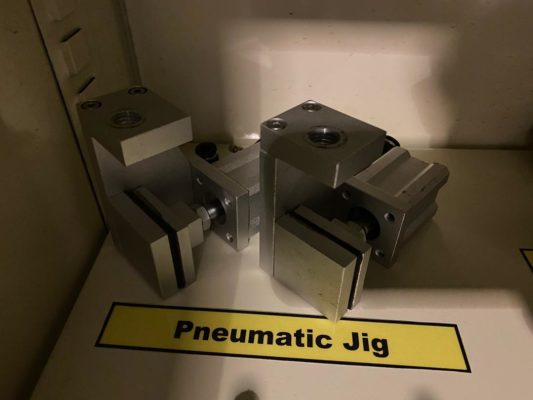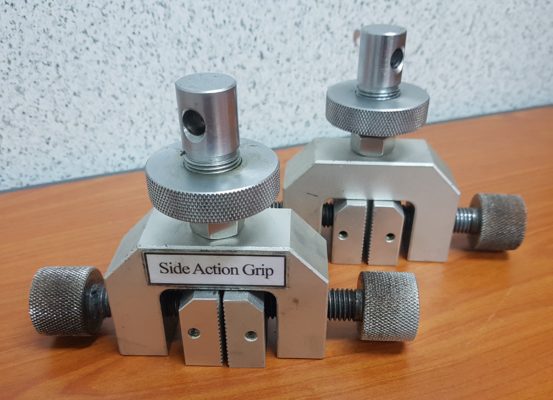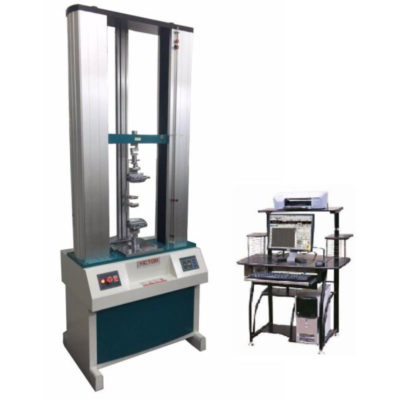ASTM is an international standards organization that is located in the United States of America. The purpose it was introduce to the industry is to publish technical standard agreements for various materials, product, systems and others. Among the ASTM standards that are often use in the industry is ASTM D5034.
ASTM D5034 Test Standard
Description For ASTM D5034
ASTM D5034 is an international test standard design for determine the breaking strength and elongation of woven, non-woven, and felted fabrics and textiles. ASTM D5034 uses grab and modified grab testing procedures to measure the strength and elongation of textile fabric. The grab test procedure is applicable to woven, nonwoven, and felted fabrics, while the modified grab test procedure is use primarily for woven fabrics.
This method is not recommended for glass fabrics or knitted fabrics and other textile fabrics that have high stretch (more than 11 %). Manufacturing industries such as fabrics and textiles often use this standard. Nowadays, ASTM standards are highly preferred by both corporate or government bodies and In Malaysia, most industries use the ASTM D5034 standard in their companies. The Malaysian government has also adopted this standard.
This test method provides both inch-pound and SI units. Inch-pound units basically use in the United States and SI units is a system of metric units that basically use in Malaysia or international. The values state in either acceptable metric units or in other units shall be regarded separately as standard. This test can be perform on using Universal Testing Machine (UTM) and also known as tensile testing machine. The following are the properties measure through ASTM D5034:
- Breaking Force
- Elongation
- Maximum Load
- Load at Extension Point
Specimens For ASTM D5034
1. Woven, non-woven, and felted fabrics and textiles
specimen width is 100-mm (4.0-in). The specimen is mounted and clamp at the tensile testing machine. To run the test, a force is apply until the specimen breaks. The test result such as the breaking force and the elongation of the test specimen is obtain from a computer interface with the testing machine.
Grips For ASTM D5034
We recommend using pneumatic or manual grips with rubber-coated inserts. The rubber coating can prevent the specimen from slipping. Usually, pneumatic grip is use to facilitate the assembly of specimens. You can open the pneumatic grips with finger toggles or foot pedals, and Foot pedals are really easy to use and allow the operator to use both hands to load the sample and Many prefer pneumatic grips for ease of use, productivity, and better repeatability.
1. Pneumatic Grip

Pneumatic grips are particularly useful when a variety of materials. and The gripping force is generate by pneumatic cylinders acting directly on the jaws or via a lever system.
2. Side action grip

Suitable to test fabric, textile webbing, metal, film, rubber and plastic
Type of UTM machine
We recommend to use UTM machines with a capacity of 5kN-20kN. It depends on the strength of the fabrics or textiles. We also recommend to use smaller machines such as dual column types
1. VEW 2308

The machine is design by mechanical-electrical integration, the composition of the force-measuring Sensor, transmitter, microprocessor, mechanism of load drive, computer and color inkjet printer. The high-precision electronic motor can be set to five-speed, the components are connected by plug-way, Floor-standing models, it is taken account of modern industrial design and ergonomics in modelling and Coating. It can be test with all the materials in the stretch, compression, bending, shear, embedded relay, Peeling. tearing, crack, etc, such as rubber, plastics, leather, metal, nylon wire, fabric, paper, aerospace, packaging, construction, petrochemical, electrical, vehicle, etc.
The implementation of standards and standard configuration:
- GB/T4689.20-1996 Measuring fastness of leather’s adhesion
- QB/T2710-2005 Measuring leather’s expansion and the rate of elongation
- QB/T2711-2005 measuring tear force of leather
- QB/T2712-2005 measuring leather’s strength and stretch of spherical crack test
Test Procedure
- Prepare the specimens as described in the method.
- Use cutting tools to carve the fabric into a rectangular shape. The longer side should be parallel to the direction that is to be test. Drawing a line down the long segment of the textile to ease the alignment of the sample into the grips.
- Once the specimen is prepare, load and secure it into the grips.
- Clamp specimen at the top of the grip first then carefully clamp the sample into the bottom grip.
- Make sure the specimen is aligned.
- Zero all the testing machine before starting the test.
- A slight preload may be apply to align the grips and remove slack.
- Start the test with constant rate until its failure/breaks.
